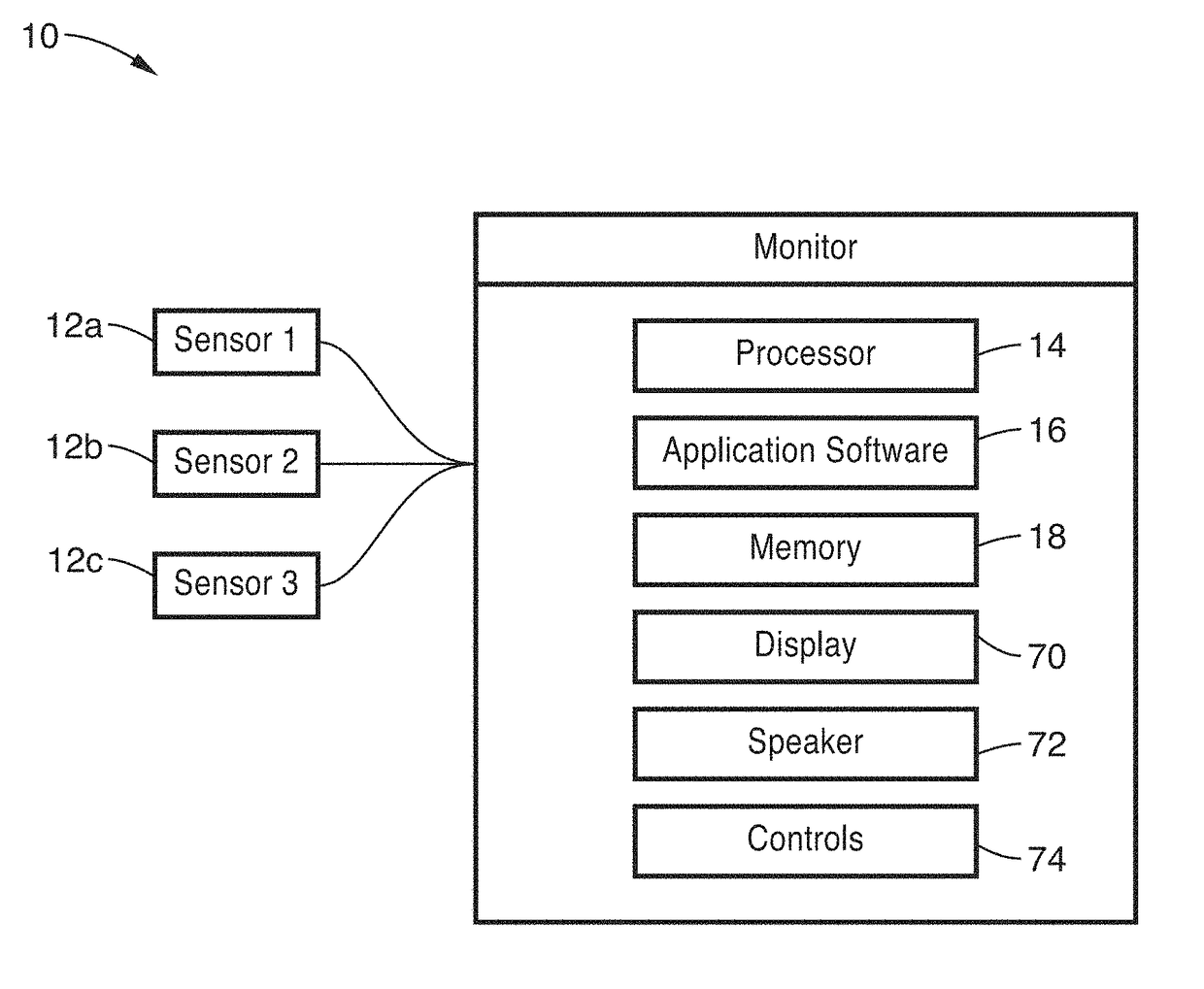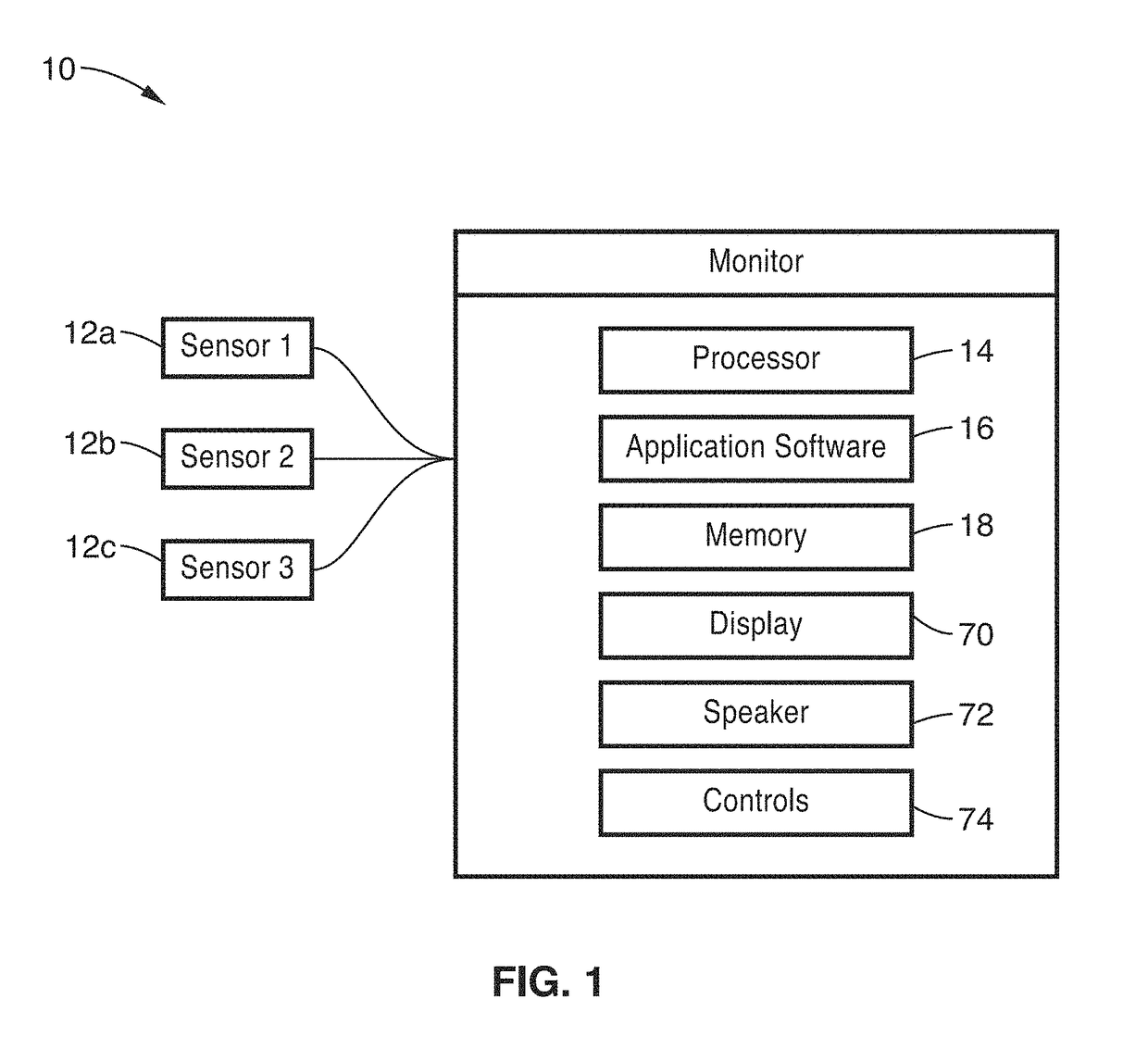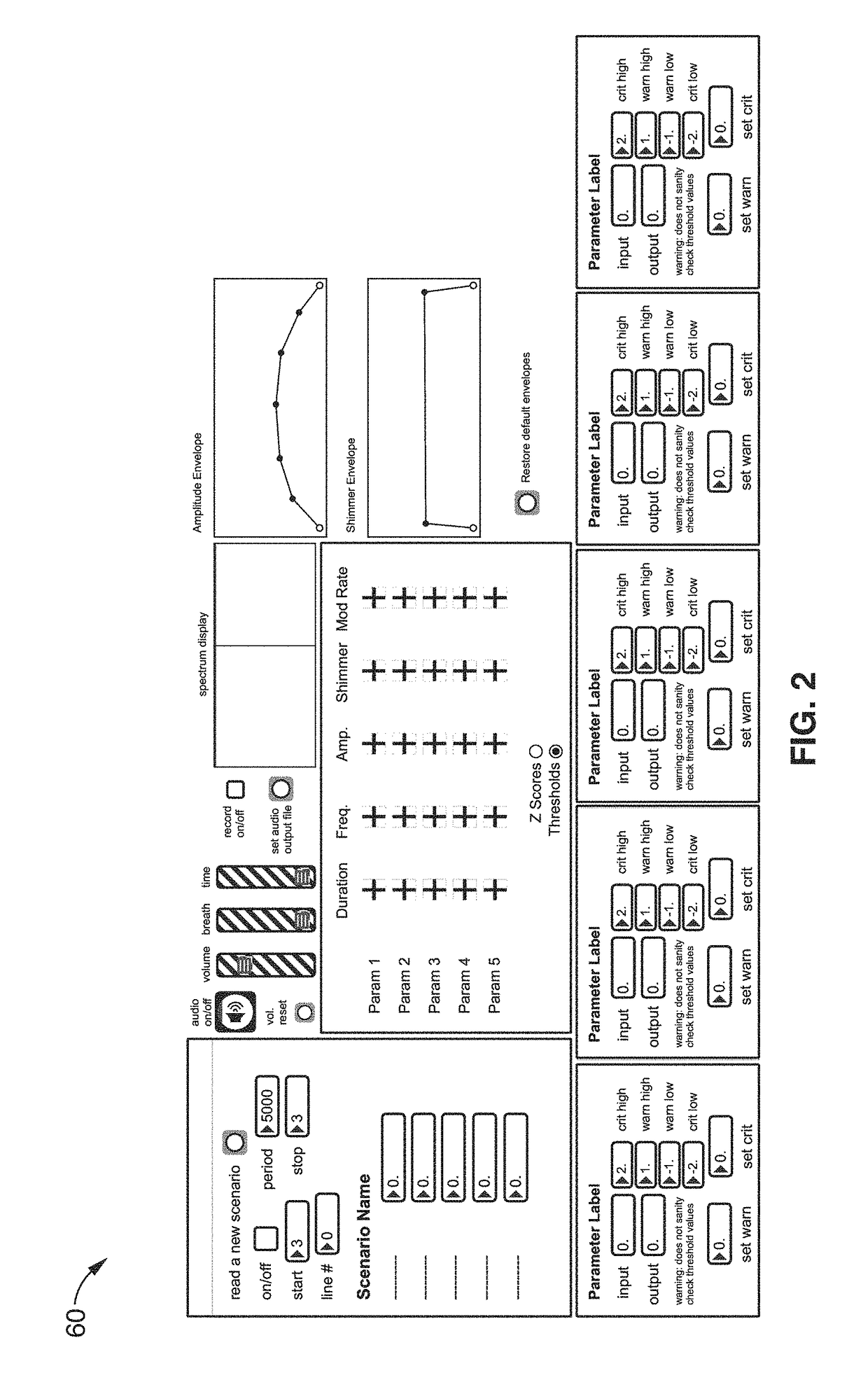Sonification systems and methods for auditory display of physiological parameters
a physiological parameter and auditory display technology, applied in the field of sonification systems and methods, can solve the problems of limiting the utility of alarms, challenging to maintain physiologic parameters such as oxygen saturation within desired ranges, etc., and achieve the effect of improving monitoring
- Summary
- Abstract
- Description
- Claims
- Application Information
AI Technical Summary
Benefits of technology
Problems solved by technology
Method used
Image
Examples
experiment 1
[0080]The specific objective of this experiment was to assess the ability of naïve participants to discriminate between relatively subtle acoustic manipulations of sounds intended to convey information about heart rate and oxygen saturation levels, and to associate those sounds with those physiological variables. The experiment was designed to step participants through three tasks of increasing difficulty, with feedback, to emulate a situation with limited training. Note that the purpose of the experiments was not to measure the perceived aesthetic qualities of the sounds or how apparent the intended semantic mappings were. Thus, the descriptions of the acoustic design principles reflect experimenter intuitions rather than experimentally established associations.
[0081]Sixteen staff members (14 female) aged 24-69 years (mean±std: 43.8±14.7) from the Intensive Care Nursery (ICN) at the Children's Hospital at Dartmouth (CHaD) participated in the experiment.
[0082]Stimuli for the experim...
experiment 2
[0110]This experiment served to replicate and extend the initial experiment. First, it measured the implicit interpretability of the sonification method by measuring initial performance without feedback in each of the conditions in Experiment 1. Second, it sought to determine whether an increase in the amount of training (up to 90 minutes) for participants who required it would lead to better performance on the name the variable and change magnitude tasks. We regarded the limit of 90 minutes as a reasonable criterion for assessing whether the sonification strategy would meet the goal of easy learnability.
[0111]17 staff members (16 female) aged 24-55 years (mean±std: 44.1±10.2) from the ICN at CHaD participated in the experiment. Two participants had participated in Experiment 1 and were excluded from the analyses reported below.
[0112]The stimuli were identical to those used in Experiment 1.
[0113]The sequence of tasks was the same as in Experiment 1 with a small number of modificatio...
PUM
 Login to View More
Login to View More Abstract
Description
Claims
Application Information
 Login to View More
Login to View More - R&D
- Intellectual Property
- Life Sciences
- Materials
- Tech Scout
- Unparalleled Data Quality
- Higher Quality Content
- 60% Fewer Hallucinations
Browse by: Latest US Patents, China's latest patents, Technical Efficacy Thesaurus, Application Domain, Technology Topic, Popular Technical Reports.
© 2025 PatSnap. All rights reserved.Legal|Privacy policy|Modern Slavery Act Transparency Statement|Sitemap|About US| Contact US: help@patsnap.com



